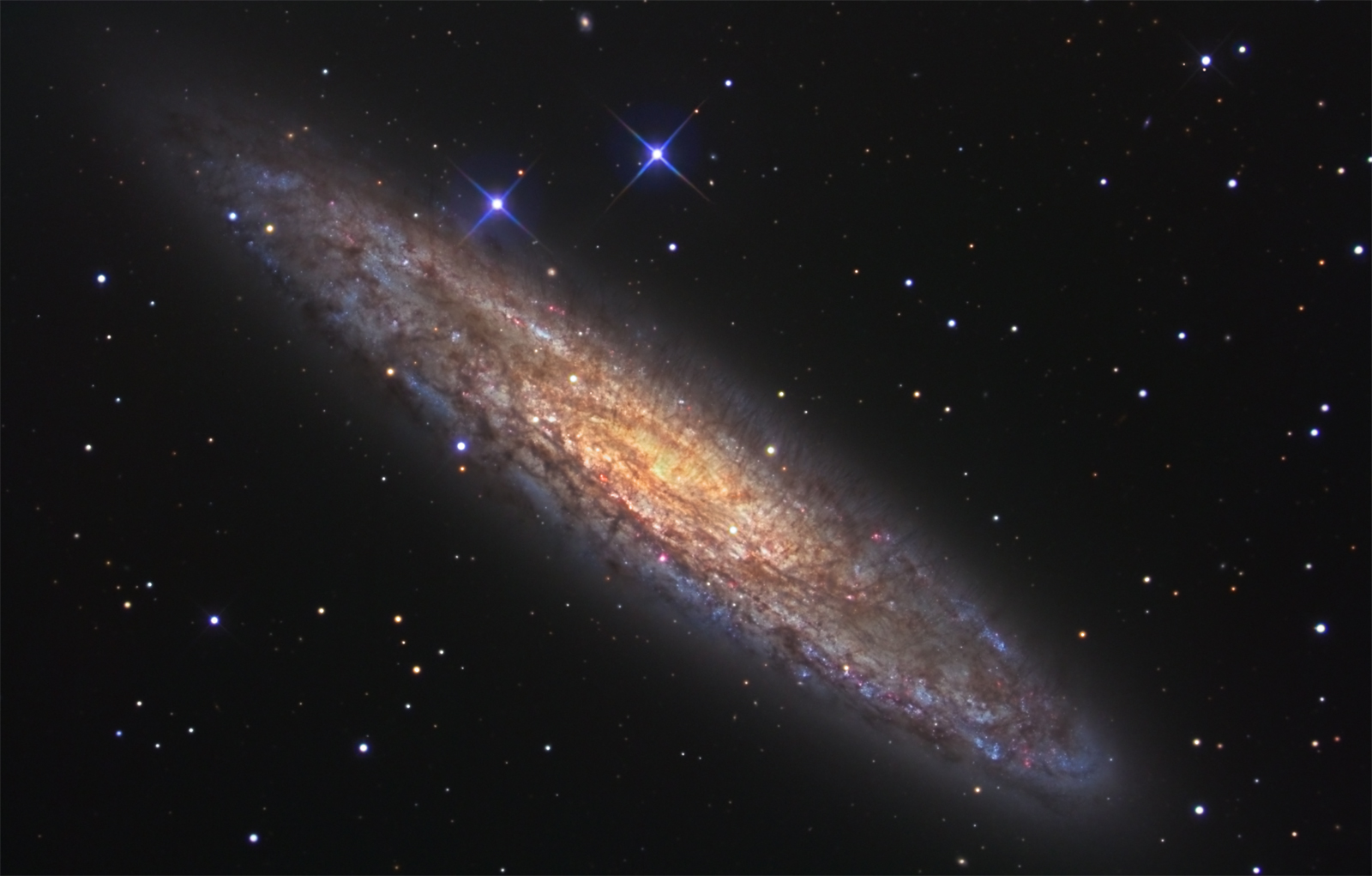UCLan awarded £0.3M
grant to unravel the origin of infrared emission in the
early Universe

Dr. Cristina C. Popescu of the
Jeremiah Horrocks Institute (JHI) for Astrophysics
and Supercomputing at UCLan
has been awarded a £0.3M grant
from the Science and Technology Facility Council
(STFC) to investigate the origin of
infrared emission from galaxies in
the early universe. The funding will be used to help unravel the fundamental
questions of how and when the initial smoothly distributed matter in the
universe condensed to form galaxies and stars over the period ranging from a
hundred million years since the big bang, to the current time 14 billion years
later.
The success was achieved in the face of intense competition in a period of
severe budget constraint - only 1 in 6 of the astrophysics proposals submitted
from universities nationwide was funded.
Dr. Cristina Popescu, a leading authority on modelling infrared emission from
interstellar dust in galaxies, commented: "About half the total light
energy
emitted since the Big Bang arrives to us today in the form of infrared photons
having wavelengths typically 100 times longer than the wavelength of optical
photons. This is primarily due to the absorption of Ultraviolet and visible
photons emitted by stars and around black holes in galaxies by vast swathes of
interstellar dust in the galaxies, a process which is particularly important
in young galaxies which have a denser interstellar medium than present day
galaxies. We will use the grant to run computer simulations of this process,
and provide a link between the observed properties of the infrared light to
the properties of this "obscured" star formation activity at early times."
The research will make use of the new
supercomputing facilities at UCLan and
will embrace the state-of-the art simulations
of the formulation and evolution
of galaxies being made by co-proposer Professor
Brad Gibson, Chair of Theoretical Astrophysics at the JHI for
Astrophysics and Supercomputing at UCLan.
Professor Brad Gibson explained "This is a unique opportunity to combine
Cristina's state-of-the-art calculations on the conversion of optical light
into infrared photons with state-of-the-art computer simulations of how dark
matter left over from the Big Bang condenses into galaxies, taking normal
matter, which can form stars, with it. If we can use the infrared light to
trace this process that would really give us a unique new insight into
processes governing the conversion of matter into galaxies and stars, which,
to be brutally honest, we really don't understand that well at present. That
would be indeed a very big step forward in our understanding of the evolution
of the Universe"
Gordon Bromage, Professor of Astronomy, Head of the
JHI
added: "Our Centre for Astrophysics has been proud to be at the forefront of
world-class research at UCLan for over a decade: in just the last year we have
made some startling discoveries about the workings of the sun, stars and
galaxies, and won over £1M new income to
support our research staff and
students. Our recent successful Research Assessment Exercise results give
further welcome recognition at the highest level for some of our world-leading
astronomy work here at UCLan. No less than 85 percent of the astronomy and
physics research here has now been judged to be of clearly international
standing."
The funding becomes available in the autumn of 2009.
Notes to editors:
The University of Central Lancashire (UCLan) has developed an enviable
reputation as an institution that innovates, evolving its course portfolio to
over 500 undergraduate programmes and 180 postgraduate courses. The
University has an established research reputation in a wide range of academic
disciplines including History, Law and Physics and has developed research
excellence in Health, Humanities, Design & Technology, Science and Business
areas. With in the region of 32,000 students, the University is one of the
largest in the UK and is currently in the process of spending more than
£60
million on new buildings and facilities to support teaching, learning and
leisure activities.
Figure caption: The dusty starburst galaxy NGC253.
Credit & Copyright: R. Jay GaBany (Cosmotography.com)
For further information, please contact:
Maria Mansfeld
E: mmansfeld@webershandwick.com
T: 020 7067 0464
